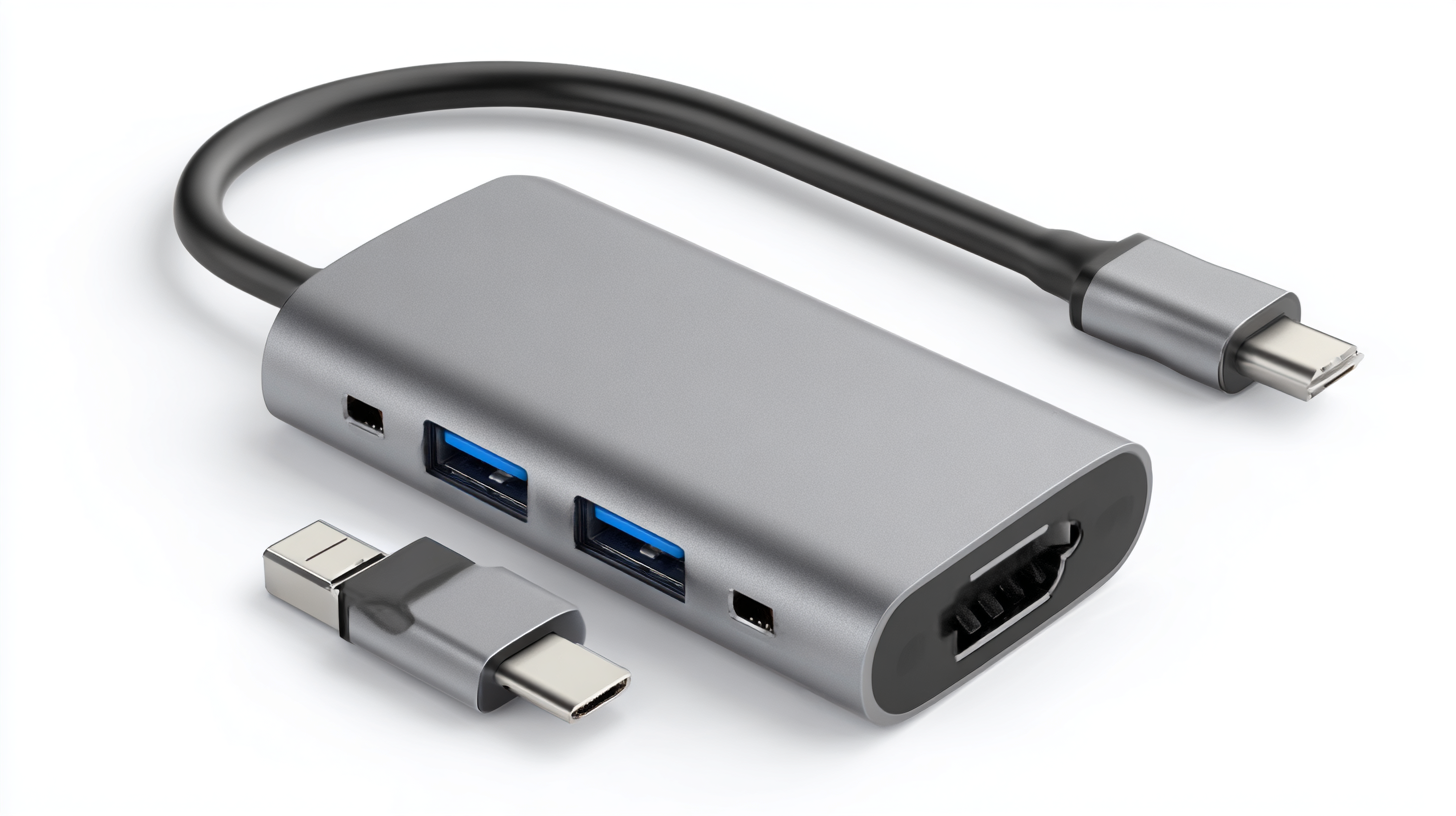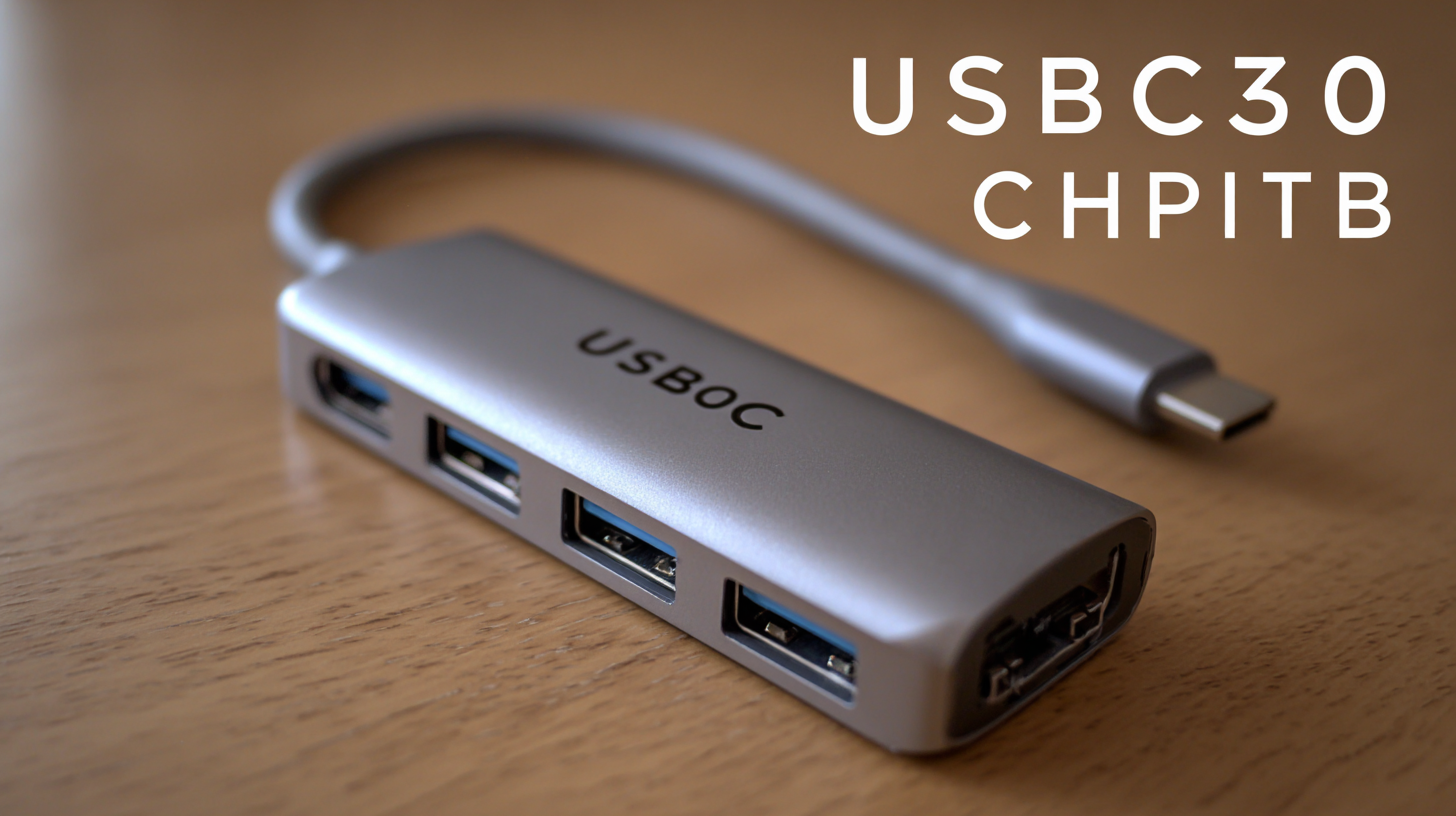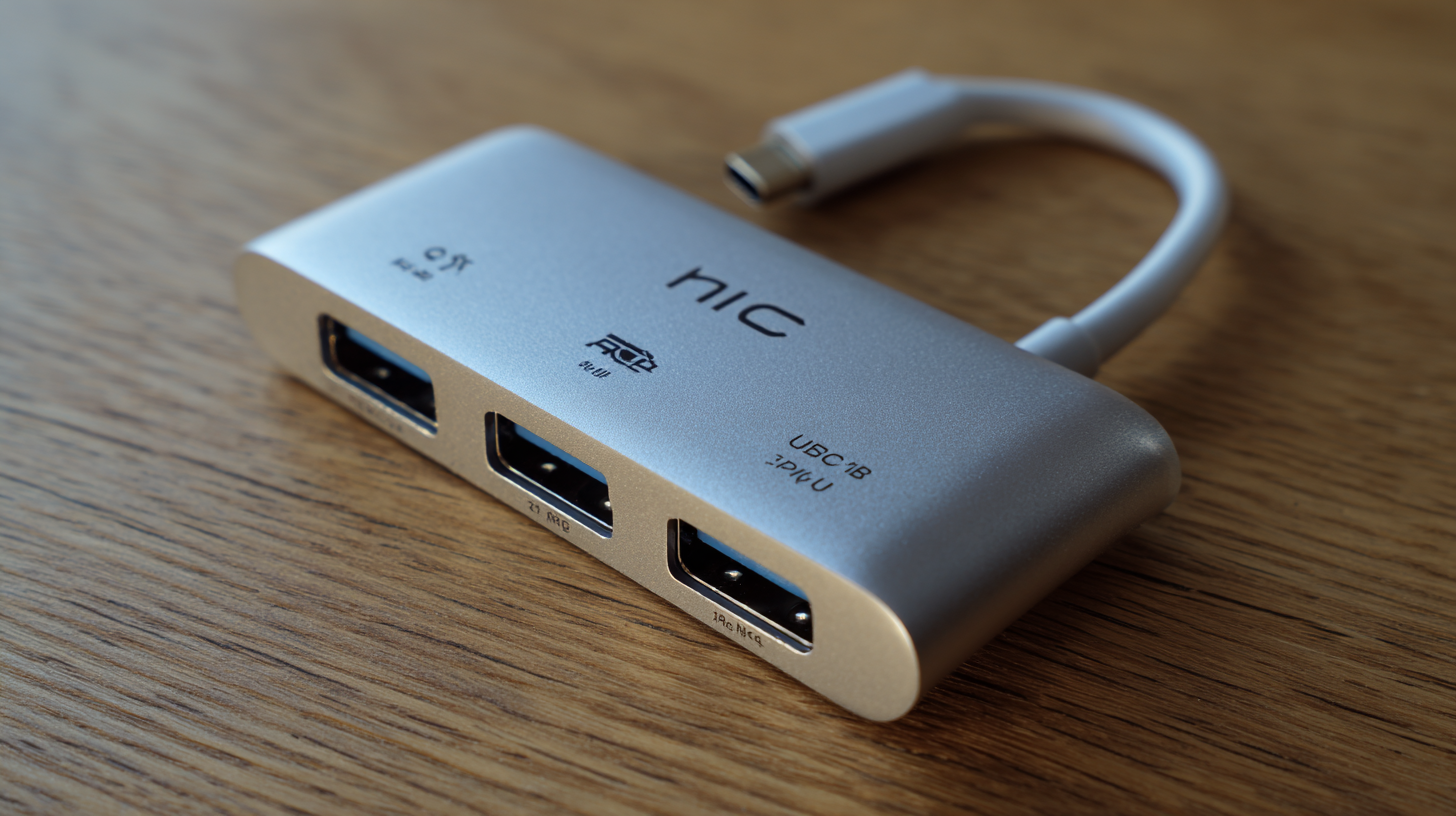
-
Home
-
Products
-
About Us
-
OEM&ODM
-
News
-
Contact Us
Inquiry
Form loading...

As technology continues to evolve, the demand for versatile connectivity options has never been greater. According to recent reports from the International Data Corporation (IDC), the global market for USB-C devices is projected to reach $30 billion by 2025, driven by the increasing adoption of laptops, tablets, and smartphones utilizing this standard. In this landscape, the Usb-C 3.0 Hub 4 Ports stands out as an essential accessory, enabling users to expand their device capabilities seamlessly. Whether for professional workflows or personal use, these hubs allow for simultaneous connections to a variety of peripherals, enhancing productivity and efficiency.

In this guide, we will explore the key factors to consider when choosing the best Usb-C 3.0 Hub 4 Ports that perfectly aligns with your specific device needs, ensuring you make an informed choice in a crowded market.
When selecting the best USB-C 3.0 hub with four ports for optimal performance, several key features should be prioritized. Firstly, data transfer speed is crucial; USB-C 3.0 can support speeds up to 5 Gbps, significantly improving productivity for users who require fast file transfers. A recent report from the International Data Corporation (IDC) indicates that over 80% of professionals work with high-resolution images and large files, making a hub’s transfer speed an essential consideration.
Power delivery capability is another feature to look for. A quality USB-C hub should not only facilitate data transfer but also charge connected devices efficiently. Many hubs now support Power Delivery (PD), allowing for higher wattage input—up to 100W in some cases. According to a study by Gartner, devices that utilize PD can recharge up to 70% faster than those using standard USB charging, which can be a substantial time-saver for busy professionals. Additionally, ensure that the hub includes a mix of port types, such as HDMI, USB-A, and SD card slots, to enhance compatibility with various devices.
When choosing the best USB-C 3.0 hub with 4 ports for your device needs, understanding compatibility becomes crucial. As the world transitions towards unified standards like Matter for smart home devices, the necessity for seamless interoperability is clearer than ever. A USB-C hub must not only connect various devices but also ensure they work together without issues. This means checking compatibility with your laptop, phone, or any other peripherals you intend to use. Make sure the hub supports the data transfer speeds and power delivery necessary for your specific gadgets.
Additionally, with many new smart devices entering the market, choosing a USB-C hub should also involve considering integrations with smart home ecosystems. For instance, some hubs may offer features that facilitate connections with different ecosystems, while others might specialize in serving specific brands. Before making a purchase, verify that your devices can communicate through the hub and that it provides the functionalities you need for a streamlined experience. As technology evolves, staying updated on compatibility standards can save you time and frustration in managing your device ecosystem.

When it comes to purchasing a USB-C 3.0 hub, quality and price are two crucial factors that can significantly affect your investment. According to a recent market report by Grand View Research, the global USB hub market is expected to grow at a compound annual growth rate (CAGR) of 4.1% from 2023 to 2030, reflecting the increasing demand for versatile and efficient connectivity solutions. This trend is particularly relevant for professionals and tech enthusiasts who rely on multiple devices and peripherals.
When evaluating options, it's essential to consider the features offered by different hubs. For instance, a reputable industry survey revealed that 74% of consumers prioritize data transfer speeds and compatibility when selecting a USB hub. Many models now boast transfer speeds up to 5 Gbps, allowing quicker file transfers for high-capacity devices. Additionally, brands that provide warranties and customer support tend to offer better long-term value, making them worthy considerations. Therefore, investing in a quality hub, while perhaps initially more expensive, can lead to cost savings in terms of durability and functionality.
| Model | Price ($) | Ports | Data Transfer Speed (Gbps) | Material | Warranty (Years) |
|---|---|---|---|---|---|
| Hub A | 35 | 4 | 5 | Aluminum | 1 |
| Hub B | 45 | 4 | 10 | Plastic | 2 |
| Hub C | 55 | 4 | 20 | Metal | 3 |
| Hub D | 25 | 4 | 5 | Plastic | 1 |
When selecting a USB-C 3.0 hub with four ports, it's essential to maximize functionality based on your everyday device needs. The ideal hub should include a mix of essential ports such as USB-A, HDMI, and SD card readers, which cater to a variety of tasks.
 For instance, if you regularly transfer photos from your camera or external drives, having an SD card slot and additional USB-A ports can be incredibly convenient. These features ensure that you can seamlessly connect multiple devices without hassle.
For instance, if you regularly transfer photos from your camera or external drives, having an SD card slot and additional USB-A ports can be incredibly convenient. These features ensure that you can seamlessly connect multiple devices without hassle.
Additionally, consider the inclusion of power delivery capabilities in your hub. This feature allows you to charge your laptop or other devices while simultaneously using the hub, thus reducing the clutter of cables on your desk. Moreover, high-speed data transfer support is crucial for those who frequently work with large files, making sure that the hub continues to meet your productivity demands. By focusing on these essential ports and features, you can select a USB-C hub that not only enhances your device's capabilities but also aligns perfectly with your daily workflow.
When it comes to selecting a USB-C 3.0 hub, one cannot overlook the significant advancements presented by Chinese manufacturers. According to a report by the International Data Corporation (IDC), Chinese tech companies are responsible for nearly 30% of the global market share in the USB accessories segment, indicating a strong preference for their products due to reliability and affordability. The innovation stemming from these companies has focused not only on performance but also on user-friendly designs, ensuring that they meet the evolving demands of consumers around the world.
Moreover, a recent analysis by Statista reveals that the USB-C market is expected to reach USD 21 billion by 2026, driven largely by the growing adoption of USB-C technology in various devices, from laptops to smartphones. Chinese-made USB-C hubs stand out in this expanding market because they incorporate cutting-edge technologies such as fast charging capabilities and data transfer speeds of up to 5 Gbps, ensuring they provide both efficiency and convenience to users. As international consumers continue to seek reliable and innovative devices, the prominence of Chinese manufacturers in the USB-C hub market is likely to grow, marking a shift in global technology dynamics.